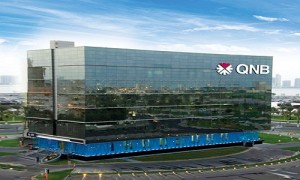
Qatar National Bank’s weekly report shows that the Eurozone’s economic recovery is underway, albeit it remains fragile.
The report said that GDP data released last week showed that growth in Germany and Spain was on an upward curve while France and Italy continue to lag behind.
This two-speed growth performance is mainly driven by the extent to which each Eurozone country has managed to gain competitiveness in the last few years by reducing its unit labor costs relative to Germany. QNB’s report warned that “. Unless this internal adjustment process continues, the growth performance in the single currency area will diverge further, with important implications for the stability of the Eurozone.”
The report commented on the GDP growth figures of the four countries by saying that growth was a “two-speed.” While Germany grew faster than expected (0.8% quarter-on-quarter), other countries lagged behind. Spain’s growth (0.4%) continued to accelerate on a positive trend for the third consecutive quarter. Growth in Ireland has not yet been released, but the consensus estimate is for a similar growth rate (0.5%).
On the other hand, France (0.0%) and Italy (-0.1%) continue to lag behind, while growth in Greece (-1.1%) and Portugal (-0.7%) remains depressed by the fiscal austerity measures contained in the ongoing IMF-supported adjustment programs. Overall, this two-speed economic recovery has resulted in a worse-than-expected Eurozone expansion in the first quarter of 2014 of only 0.2%.
The report noted that unite labor costs will be paramount for the French and Italian economies. Because as unit labor costs rise, there must be a corresponding rise in labor productivity, or else businesses lose competitiveness.
The report reviewed the history of unit labor costs in the Eurozone and its relations to economic growth. It said that the strong relationship was evident in as early as 15 years ago. Starting in early 2003, Germany implemented a series of labor market reforms aimed at reducing unit labor costs in order to increase the competitiveness of German businesses and reduce unemployment.
The report attributed these reforms as the driver of German economy which propelled its economy to become the strongest in the Eurozone.
These reforms have also helped keep labor costs below the Eurozone average for 12 years, it also led to one of the lowest unemployment rates in Europe. These reforms, named after Peter Hartz, the head of the commission that recommended them have managed to keep unit labor costs well below the Eurozone average for the last 12 years, resulting in higher German economic growth and one of the lowest unemployment rates in Europe.
Other countries like Greece, Portugal and Spain did not follow through with the German model. The rising gap in unit labor costs between Germany and the Eurozone periphery became so large that it eventually forced an abrupt outflow of capital as the economy could no longer generate the required returns, “thus unleashing the Eurozone crisis,” the report read.
The report noted that since the crisis, Greece and Spain have been working on lowering labor costs through reducing government spending and thus repressing domestic demand in order to regain competitiveness.
Source : Qatar News Agency












